Incubation Behaviors
It’s been 31 days since the first egg was laid, which means these Peregrine Falcons are nearing the end of their incubation period. If their past trend of 38 days between the first egg laid and the first egg hatched continues, we could very well witness the first hatch just 1 week from today!
During this incubation period we have observed both sexes sitting on the eggs with the female doing most of the sitting and the male sitting for briefer periods, as is the norm for Peregrine Falcons. During incubation exchanges, you may have noticed the female communicating with the male just before leaving the nest to let him take over. It is most likely that she is responding to the male who calls her off, possibly having left food for her somewhere nearby or just to take his own turn. Other potential reasons why she may leave the nest could be to preen, to eliminate waste, or in rare instances to do some hunting of her own.
When the birds resume their sitting position on the eggs you may have noticed the falcons fluffing out their breast feathers, scraping the eggs inward using their bill, and a rocking motion as they settle down onto the eggs. All of these behaviors are to ensure that the falcon achieves more precise contact of their brood patches with the eggs. A brood patch is a temporary bare patch of skin on a bird’s belly, developed during the egg-laying period, which allows birds to keep their eggs warm using their body heat. Female Peregrine Falcons have two brood patches, one on either side of their sternum.
Other incubating behaviors you may have been observing is that the birds are almost always awake while on the nest. Sitting falcons rarely sleep during the day, but may occasionally close one eye, so that they may remain watchful. The bird may also turn occasionally, periodically rise up and rearrange the eggs, preen their feathers, or stretch their wings. Sometimes they will also pick at the pebbles around the scrape, possibly for nest maintenance.
We will continue to patiently watch these ongoing incubation behaviors over the next week and hope to see the first hatch next Monday.
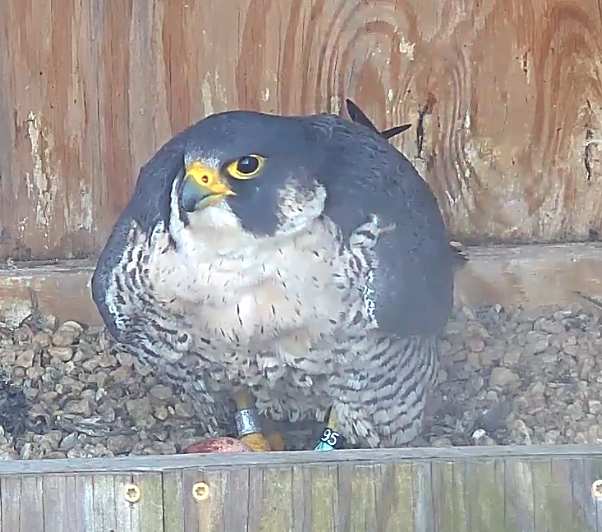
The female falcon with feathers fluffed prior to sitting upon the eggs.
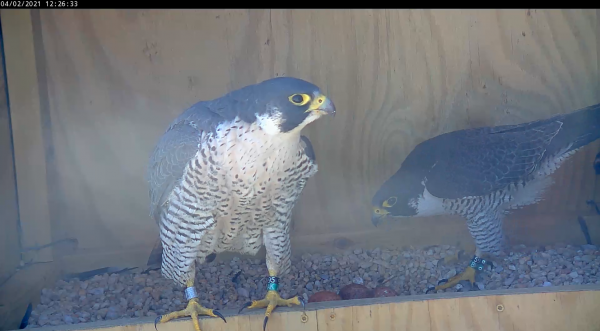
The male and female falcons together at the nest site.
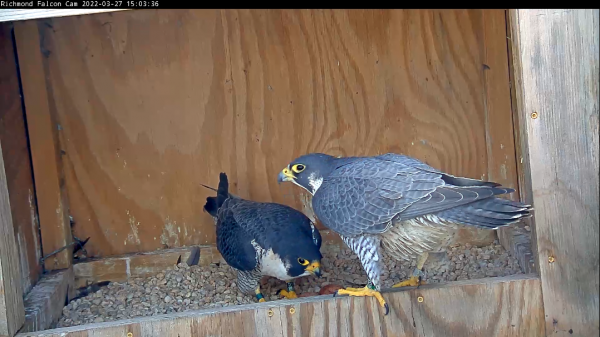
The male falcon returns to the nest to take a turn at incubation.
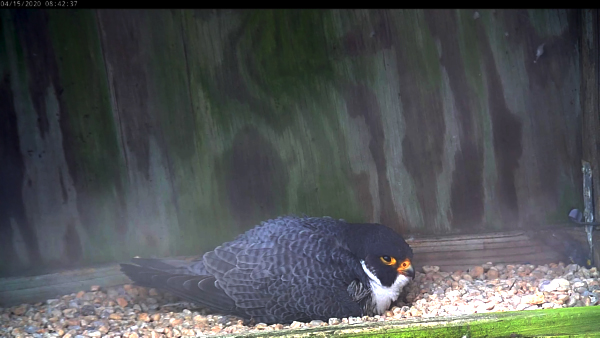
The male falcon incubating the eggs.
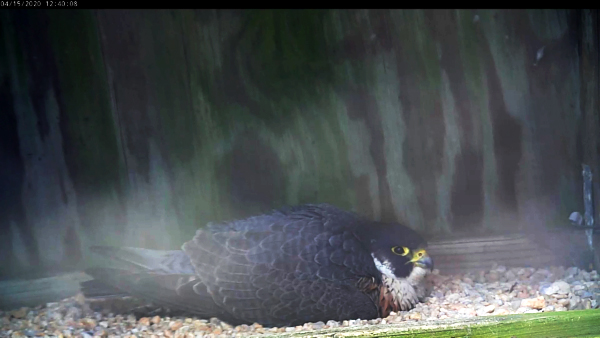
The female falcon incubating the eggs.

